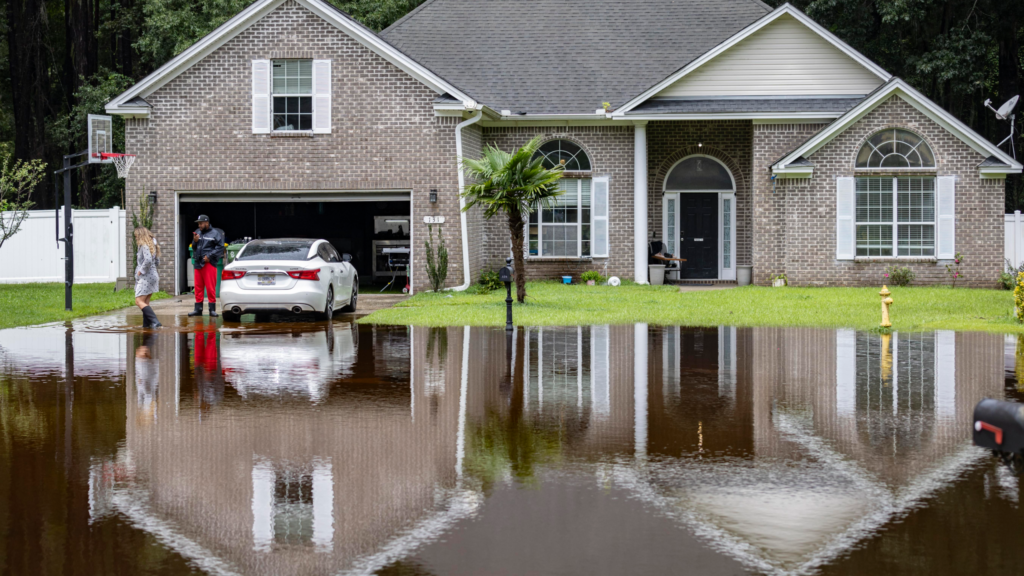Tropical Storm Debby has unleashed a wave of destruction across the southeastern United States, with South Carolina bearing the brunt of its fury. The storm’s relentless rainfall has led to widespread flooding, forcing residents to evacuate their homes and causing significant damage to infrastructure. As communities grapple with the aftermath, emergency responders are working tirelessly to assist those affected by this natural disaster.
The impact of Tropical Storm Debby extends far beyond South Carolina’s borders, affecting multiple states along its path. This article delves into the storm’s destructive journey from Florida to South Carolina, examines its wide-ranging consequences, and shares firsthand accounts from residents caught in its wake. By exploring these aspects, we aim to shed light on the severity of the situation and the challenges faced by those in the storm’s path.
Debby’s Destructive Path: From Florida to South Carolina
Timeline of the storm’s progression
Tropical Storm Debby made its initial landfall in North Florida on Monday as a Category 1 hurricane with wind speeds around 80 miles per hour. After weakening over land, Debby regained strength in the Atlantic Ocean before making a second landfall near Bulls Bay, South Carolina, at 2 a.m. EDT with maximum sustained winds of 50 mph.
Areas hit hardest
The storm’s impact was widespread, with several areas experiencing severe flooding. Near Lake City, Florida, rainfall totals reached 19.67 inches. In South Carolina, Summerville reported 17.27 inches of rain, while Rincon, Georgia, received 13.44 inches. The Low Country and Coastal Empire faced the highest risk of significant river flooding. Colleton County, South Carolina, saw extensive damage, with a 20-acre pond draining after two holes were punched in surrounding dikes.
Comparison to previous storms
Debby’s rainfall totals approached those of historic storms like Hurricane Matthew in 2016 and Hurricane Florence in 2018. Florence set state records with 35.93 inches near Elizabethtown, North Carolina, and 23.763 inches at Loris, South Carolina. Matthew caused widespread flooding in 2016, with peak rainfall of 18.95 inches near Evergreen, North Carolina. Debby’s impact, while significant, has not yet surpassed these recent devastating storms.
Multi-State Impact of Tropical Storm Debby
Affected states beyond South Carolina
Tropical Storm Debby’s impact extended far beyond South Carolina. Florida, Georgia, North Carolina, and Virginia faced significant challenges. The storm’s effects reached as far as Maryland, upstate New York, and Vermont, with forecasts predicting 2 to 4 inches of rain and local amounts up to 6 inches. This widespread rainfall was expected to cause considerable flash flooding, urban flooding, and river flooding.
Coordinated response efforts
President Biden approved emergency declarations for Florida, Georgia, and South Carolina, authorizing FEMA to provide federal assistance. FEMA activated its National Response Coordination Center and Region 4 Regional Response Coordination Center to manage resources and response assets. Urban Search and Rescue teams, including water rescue units, were positioned to assist affected states. Additionally, FEMA pre-staged ambulance assets in Florida, Georgia, and South Carolina.
Economic implications
The full economic impact of Tropical Storm Debby is yet to be determined. However, the widespread flooding, potential property damage, and disruption to local businesses are likely to have significant economic consequences for the affected states. The storm’s slow-moving nature may prolong its impact, potentially leading to more extensive damage and higher recovery costs.
Residents’ Experiences and Testimonies
Eyewitness accounts
Barbara Zeller, 54, from Charleston, described the flooding as “thigh-high, almost to my waist“. She witnessed cats swimming through the floodwaters. Glenn De Vecchis, 69, from Metter, Georgia, experienced three days of non-stop rain and dangerous road conditions. Michael Kavanaugh, 67, from Wilmington Island, observed debris scattered and power lines drooping on the ground.
Evacuation stories
Mandatory evacuation orders were issued for several Florida counties, including Alachua, Citrus, Dixie, Franklin, Levy, Taylor, and Wakulla. In Taylor County, residents were strongly encouraged to evacuate coastal and low-lying areas. The Taylor County Elementary School shelter opened to accommodate evacuees.
Community resilience
The Waccamaw Community Foundation played a crucial role in disaster relief efforts, serving as the primary hub for financial donations in Horry, Georgetown, and Williamsburg counties. Local organizations, including VOADs, Habitat for Humanity, and Catholic Charities, provided immediate and long-term recovery assistance.
Conclusion
Tropical Storm Debby’s impact on South Carolina and neighboring states has been severe and far-reaching. The storm’s heavy rainfall has caused widespread flooding, leading to evacuations, property damage, and significant challenges for affected communities. The multi-state response, including federal assistance and coordinated efforts from emergency services, highlights the storm’s extensive reach and the complexities of managing such a large-scale natural disaster.
The experiences shared by residents provide a human perspective on the storm’s effects, showcasing both the immediate dangers and the resilience of affected communities. As recovery efforts continue, the full extent of Debby’s impact on infrastructure, local economies, and daily life is yet to be determined. The storm serves as a stark reminder of the power of nature and the importance of preparedness and community support in the face of such events.
